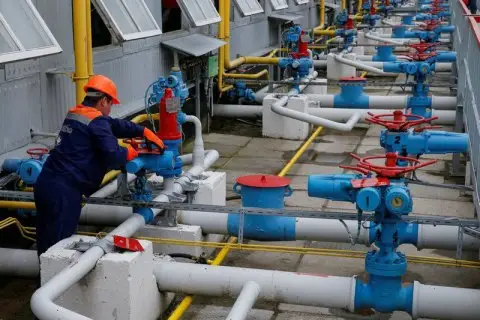Gas crisis: should Europe wait for a repeat?

Traditionally, underground gas storage facilities in the EU are filled in spring and summer when households and businesses reduce their heating usage. However, this year, gas supplies from russia were at a historic low. Therefore, the EU committed itself to filling the storage facilities by 90% by 1 November. The plan was fulfilled in mid-August. In Latvia and France, the occupancy rate is 90%. In countries with major underground gas storage capacities, such as: Germany, the Netherlands, Austria and Hungary, the storage capacity is 95% full.
European Energy Commissioner Kadri Simson said: "The EU now has more than 100 billion cubic meters of gas, covering about a third of winter demand."
Europe is doing everything possible to avoid a new energy crisis, but it depends on many factors: weather conditions, consumer frugality and the ability to avoid accidents and strikes that could lead to disruptions in gas supplies from russia. According to the International Energy Agency (IEA), 27 EU countries with a population of 450 million people will use 490 billion cubic meters of gas in 2023. The highest demand will be in winter.
It is worth noting that last winter was warm, and a significant amount of gas remained in storage. As a result, Europe is more independent of russian supplies than it was last year. "We are no longer dependent on russian energy," said German Finance Minister Christian Lindner. However, russia has the ability to cut off the last two pipelines to Europe through Ukraine and Turkey. This could lead to a large-scale energy crisis, so Europe is considering saving gas and finding alternative sources of supply.
Ukrainian gas storage facilities could help Europe. Unlike the European ones, they are currently only 35% full. Pipelines that once transported russian gas to Central and Eastern Europe are now being used for reverse supply. The current supply volumes do not exceed 200 million cubic meters per week. This is equivalent to 4% of total European gas imports, or 40% of gas imports from russia.
It should be reminded that the EU has been gradually increasing its dependence on russia for decades, as russian gas covered 40% of all European needs. However, Gazprom, which was subordinate to putin, began systematically reducing gas supplies to Europe even before the full-scale invasion of Ukraine.
"putin was planning to strangle Europe, and that was his plan A. There was no plan B," said Tatiana Mitrova of the Centre for Global Energy Policy at Columbia University.
After the failure of the military blitzkrieg, the kremlin launched a second front of the gas war against the EU, hoping to cause an energy crisis and social discontent to undermine the resolve of the 27 EU countries to support Ukraine. In the spring of 2023, russian supplies dropped to historic lows.
However, Europe did not make any concessions, but rather resolutely began to save gas and invested almost €1 trillion in support for households and businesses, as well as in alternative energy sources.
Europe also imposed an almost complete boycott on the purchase of russian oil and oil products. Gas was not subject to sanctions, but some EU countries voluntarily abandoned it. At the same time, the EU announced its intention to completely abandon purchases of fossil fuels from russia by 2027, acknowledging that, unfortunately, it cannot do without russian coal in the next three to four years.









